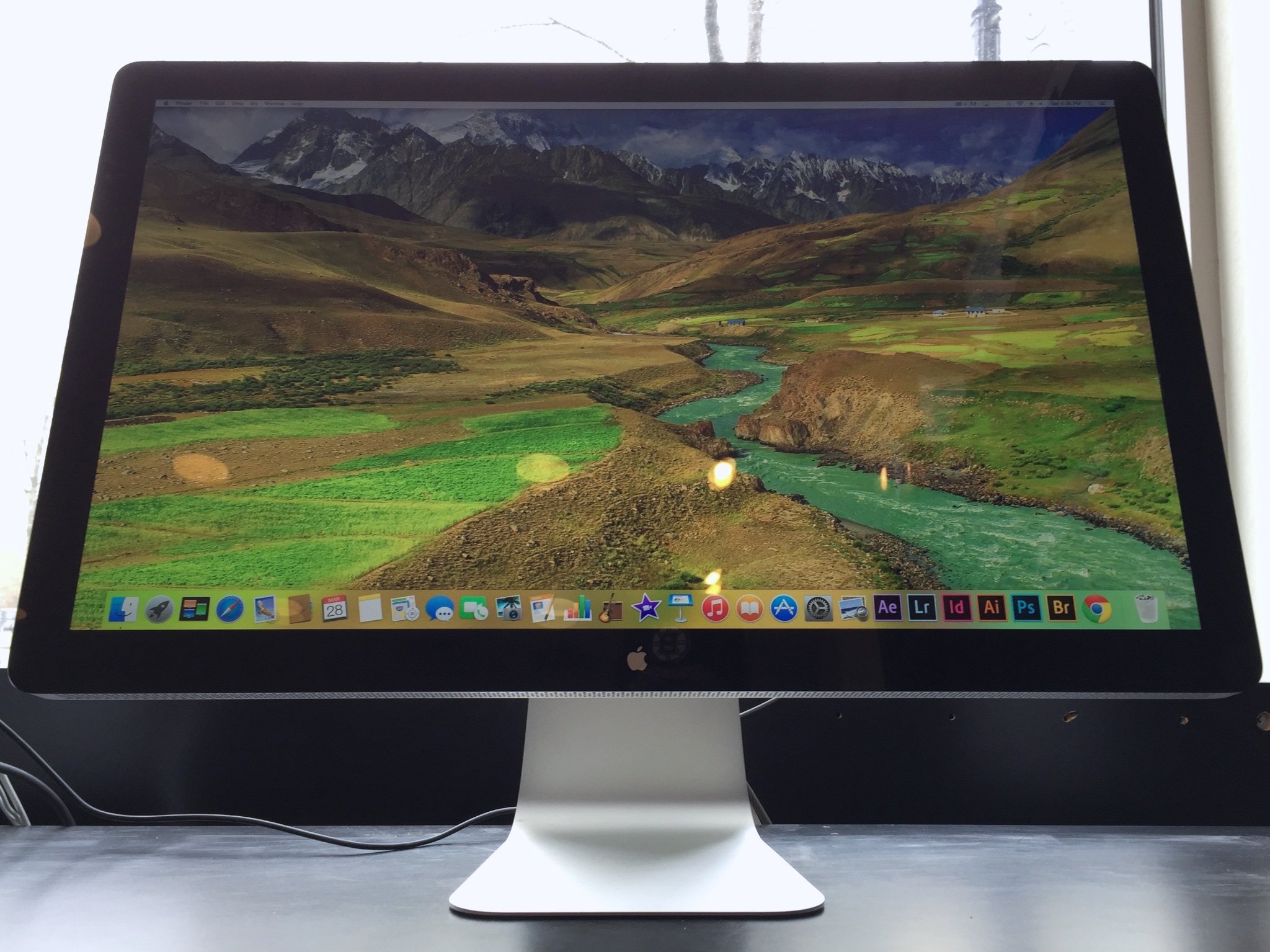Mac Help: Is the Apple Thunderbolt Display worth it?

Given that the Mac can work with just about any display using the right adapter, what exactly do you get with the Thunderbolt Display, anyway? That's the question I'm trying to help a reader with this week.
M.J. writes:
What is your opinion of the Apple Thunderbolt Display? I want it as a second screen for my 2014 13" MacBook Pro.
I'm a fan of the Thunderbolt Display. It has a beautiful color gamut, looks like a Mac peripheral and sports oodles of screen real estate with its 2560 x 1440 pixel resolution. It's just a great monitor, period.
What's more, it hooks up to the Mac using a single built-in Thunderbolt cable (hence the name), but provides three powered USB 2.0 ports, a FireWire 800 port, Gigabit Ethernet, and additional Thunderbolt port for you. There's also built-charging cable for MacBooks old and new alike (it's a MagSafe charger which works with older MacBook Air and MacBook Pro models, but Apple includes a MagSafe 2 adapter to connect to all the newer MacBooks too — except for the MacBook — the new MacBook, which uses USB-C. What's more, the Thunderbolt Display has a built-in FaceTime camera and speakers, so you won't have to clutter up your desk with an external webcam or external speakers.
If you're looking for the best-integrated display that looks and acts like a proper Apple product, you won't find anything that works, looks and sports the same features as the Thunderbolt Display.
Having said that, it's pretty ferociously expensive compared to other 2560 x 1440 resolution 27-inch displays. You can find displays for less than $300 with the same resolution and the same screen size. And connecting them to a Mac with Thunderbolt is trivial: You usually just need a Thunderbolt to DVI or HDMI adapter to make it happen.
These dramatically less-expensive displays are not going to be calibrated the same way as the Thunderbolt Display and they're not going to look the same as the Thunderbolt Display. But if you're on a budget and you just want to see more stuff on the screen, such displays are the way to go.
Master your iPhone in minutes
iMore offers spot-on advice and guidance from our team of experts, with decades of Apple device experience to lean on. Learn more with iMore!
There are a few things that make me pause when considering the Thunderbolt Display. Its design is one of them. It was created before Apple moved to the thinner design used by the iMac in 2012, which means it still has a thick black bezel, it's heavy and awkward to move. Customers in the store I work in often confuse our demo model, connected to a new Mac Pro for an older iMac. Also, it has three USB 2.0 ports: Fine for mice, keyboards and slower storage peripherals. But much of the USB peripheral world, especially hard drive makers, has moved to faster USB 3.0. Those devices will work with the older USB 2.0 interface, they just won't work at optimal speed.
I'd like to see Apple update it, but I don't think that'll happen right away. Apple's newest hotness is the 5K iMac, which came out in late 2014. That device uses a screen with such high resolution that there isn't a Mac that has an external interface that can handle it.
That won't happen until Apple updates Macs with Intel Skylake processors, which aren't expected to go into distribution until later this year. There's no guarantee that Apple's going to be early with Skylake-equipped Macs, either.
Bottom line: If you want a display for your Mac that looks and acts like a Mac display should, Apple's Thunderbolt Display is a good choice. Especially if someone else like an employer is paying the bill. But if you want to get more for your money, shop around and accept that the display you're looking at won't have an Apple logo on it.

